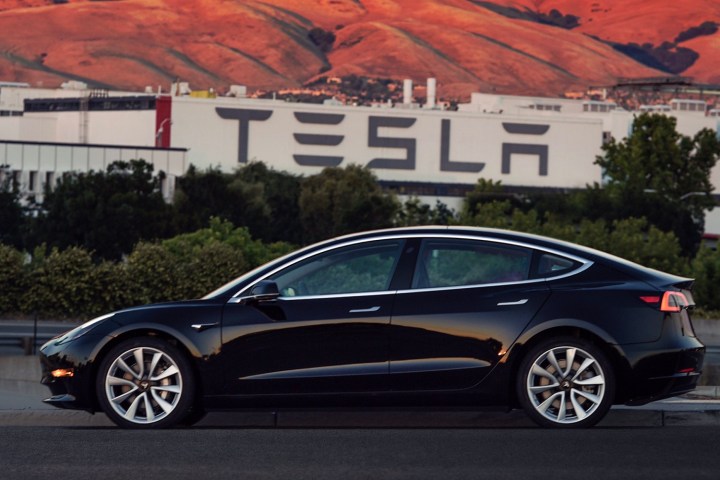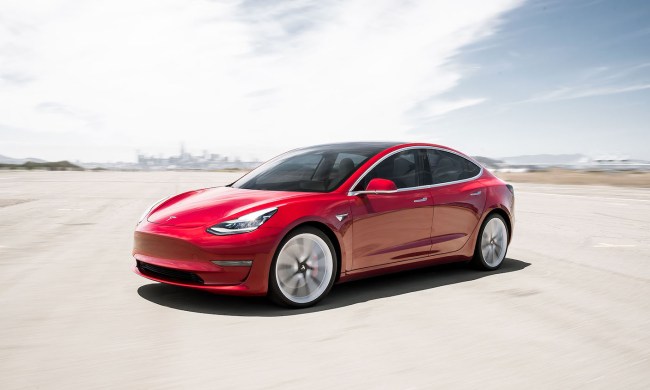
Tesla said it actually built 2,425 Model 3s during the quarter, but not all cars had been delivered to customers. The company said it was not able to deliver many of the Model 3s it built because of a production spurt that came just before the holiday season. Tesla says it built 793 Model 3s in the last seven working days of the fourth quarter, and that it has made as many Model 3s since December 9 as it had in the more than four months of Model 3 production up to that point. Tesla said 860 Model 3s (as well as 2,520 Model S and Model X electric cars) are currently in transit to customers; they will be counted in Q1 delivery totals.
Tesla previously said it delivered 260 Model 3s in the third quarter of 2017. The first 30 were handed over to their owners in a well-publicized ceremony, but production was initially sluggish as Tesla grappled with the challenge of quickly ramping things up, a process CEO Elon Musk has called “production hell.”
The automaker said that it has made “major progress” in overcoming Model 3 production bottlenecks and that it has “slightly reduced” Model S and Model X production rates in order to shift workers to the Model 3. Nonetheless, Model S and Model X deliveries were up 9 percent from their third-quarter totals, pushing Tesla over the six-figure mark for annual deliveries for the first time in its history. Tesla delivered 103,122 cars in 2017, up from about 76,000 cars in 2016.
Tesla also announced that it was once again delaying a goal of producing 5,000 cars a week. The company said in July that it would hit that goal by the end of the year, then pushed it to the end of the first quarter of 2018. Now it’s been pushed back again, to the end of the second quarter of 2018. Tesla said it plans to “continue to focus on quality and efficiency rather than simply pushing for the highest possible volume in the shortest period of time.”
Emphasizing quality over quantity is the “right focus,” said Autotrader executive analyst Michelle Krebs, adding that “ramping up production levels with a flawed product is foolish.” But she added that Tesla may have erred in announcing such “lofty” goals before starting production.
Given that many customers don’t expect to get their cars until late 2018 or 2019, there is still time for Tesla to meet its goals, Akshay Anand, an analyst for Kelley Blue Book said, adding that if Tesla fails, it will be about more than missing production goals.
“Tesla needs to get the Model 3 right in order to succeed as a company” Anand said.

